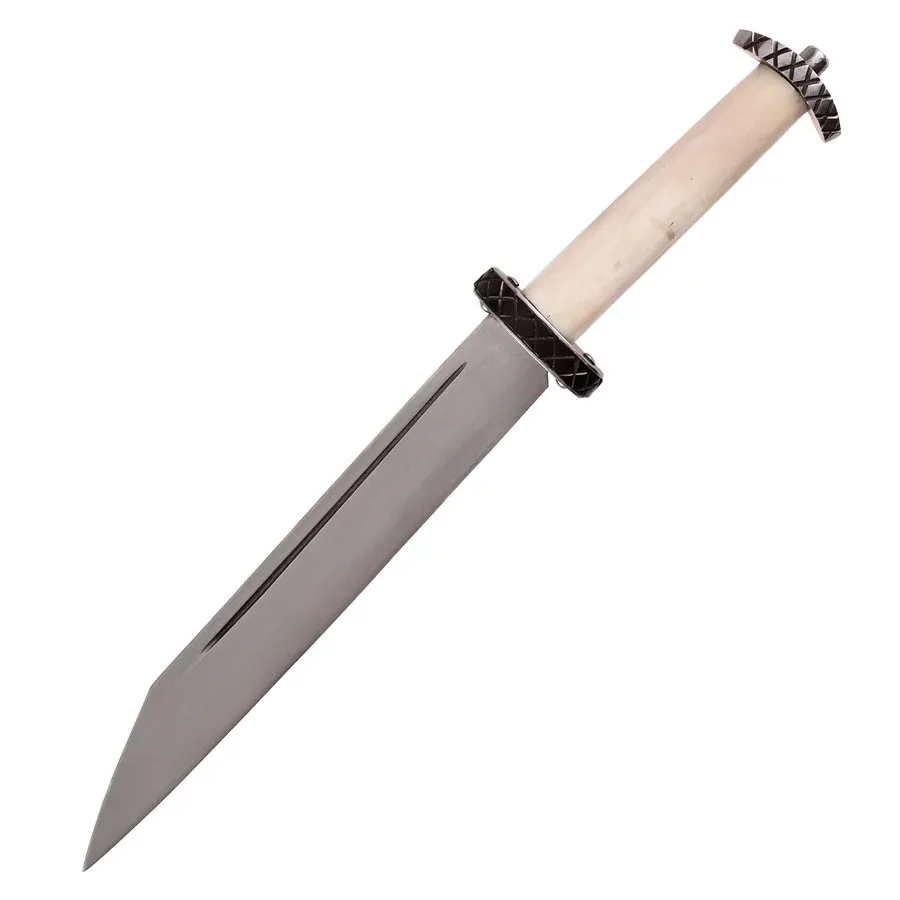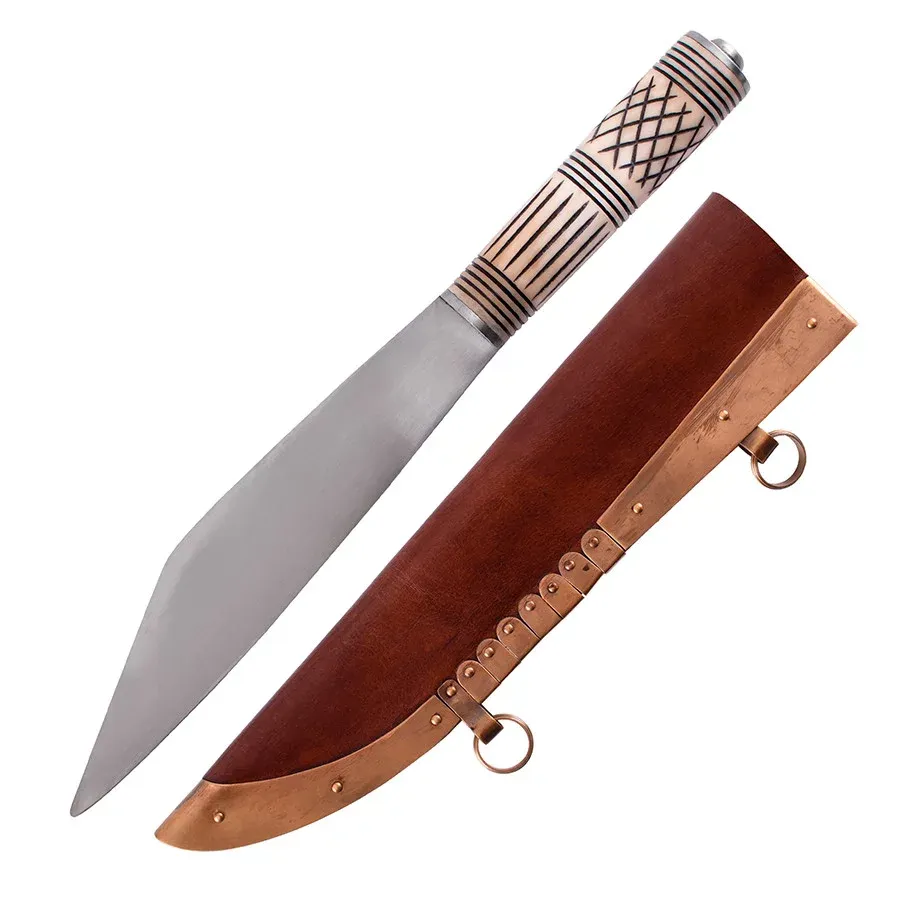What is a Seax?
The Seax is an emblematic weapon of the early medieval Germanic cultures, especially used by the Saxons. This versatile knife or single-edged dagger served not only combat functions but also became integrated into the daily life of these peoples. The term "seax" comes from Old English and designates a specific type of cold weapon that played a crucial role from the migration period well into the Middle Ages.
Characteristics of the Seax
- Design: The Seax is characterized by its single-edged blade, which can vary considerably in length and width. Many Seax blades feature decorations such as braided bands or serpent engravings. The edge and back of the blade typically curve toward the tip, giving the weapon a distinctive profile.
- Grip: Organic materials like wood or horn were commonly used to make the grip of the Seax. Additionally, it was common to reinforce it with metal pommels or fittings to enhance grip and durability.
- Carrying: Traditionally, the Seax was carried horizontally in a sheath hung from the belt, positioned so that the blade faced upwards.

Types of Seaxes
The Seax was not a uniform weapon but presented various variants, each with unique characteristics:- Narrow Long Seax: This type features a long, narrow blade with elaborate decorations including grooves or patterned welds.
- Short Seax: A smaller version, frequently used as a secondary weapon, often showing simpler decorations on the blade.
- Broken-Back Seax: Notable for its distinctive angular transition between the tip of the blade and its back. This design has been predominantly identified in the United Kingdom, Ireland, and some regions of Germany.
- Scramasax: The most compact Seax, used by Germanic tribes such as the Franks and Goths. It was designed for stabbing and was also effective for cutting, ranging in length from 10 to 50 centimeters.

Use and Evolution of the Seax
From the 7th century, the Seax established itself as a primary weapon among the Germanic peoples, whose use spread throughout Europe. However, the prevalence of various types of Seaxes varied significantly by region. In England, although the Long Seax arrived after its acceptance on the continent, it remains exceptional in archaeological discoveries.| Type of Seax | Characteristics | Common Region |
|---|---|---|
| Narrow Long Seax | Long, narrow, decorative blade | Germanic Europe |
| Short Seax | Short blade, simple decorations | Western Europe |
| Broken-Back Seax | Angular transition in the blade | United Kingdom, Ireland, Germany |
| Scramasax | Blade between 10 and 50 cm, multi-purpose | France, Germany |
The Seax, both as a weapon and tool, is fundamental to understanding the daily life and martial traditions of the Germanic peoples. Its adaptability and evolution reflect the cultural diversity and changes that occurred in the early Middle Ages.
















